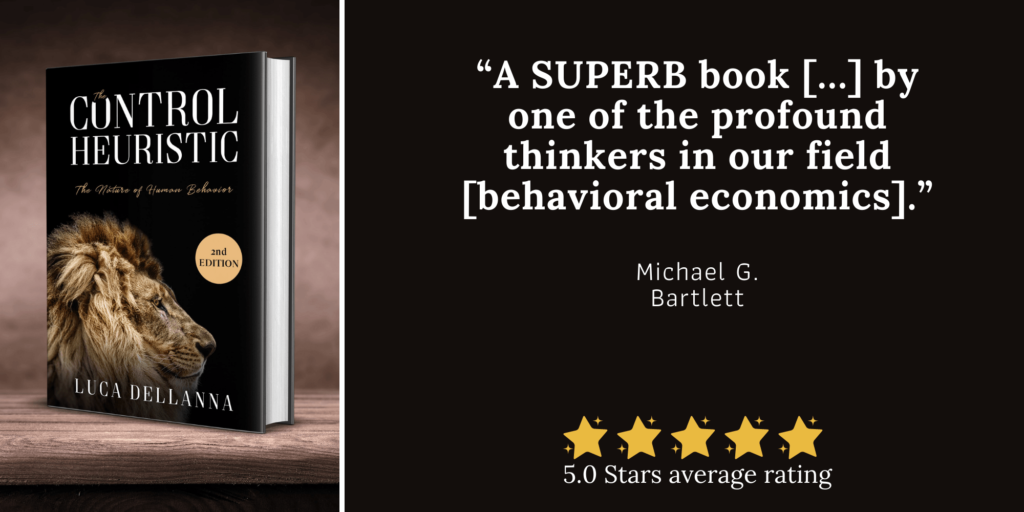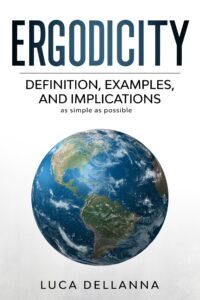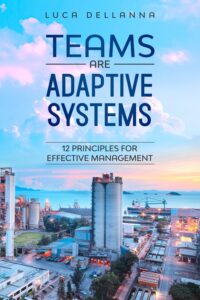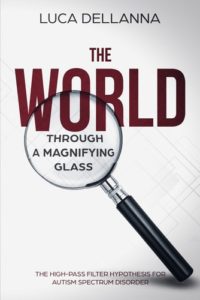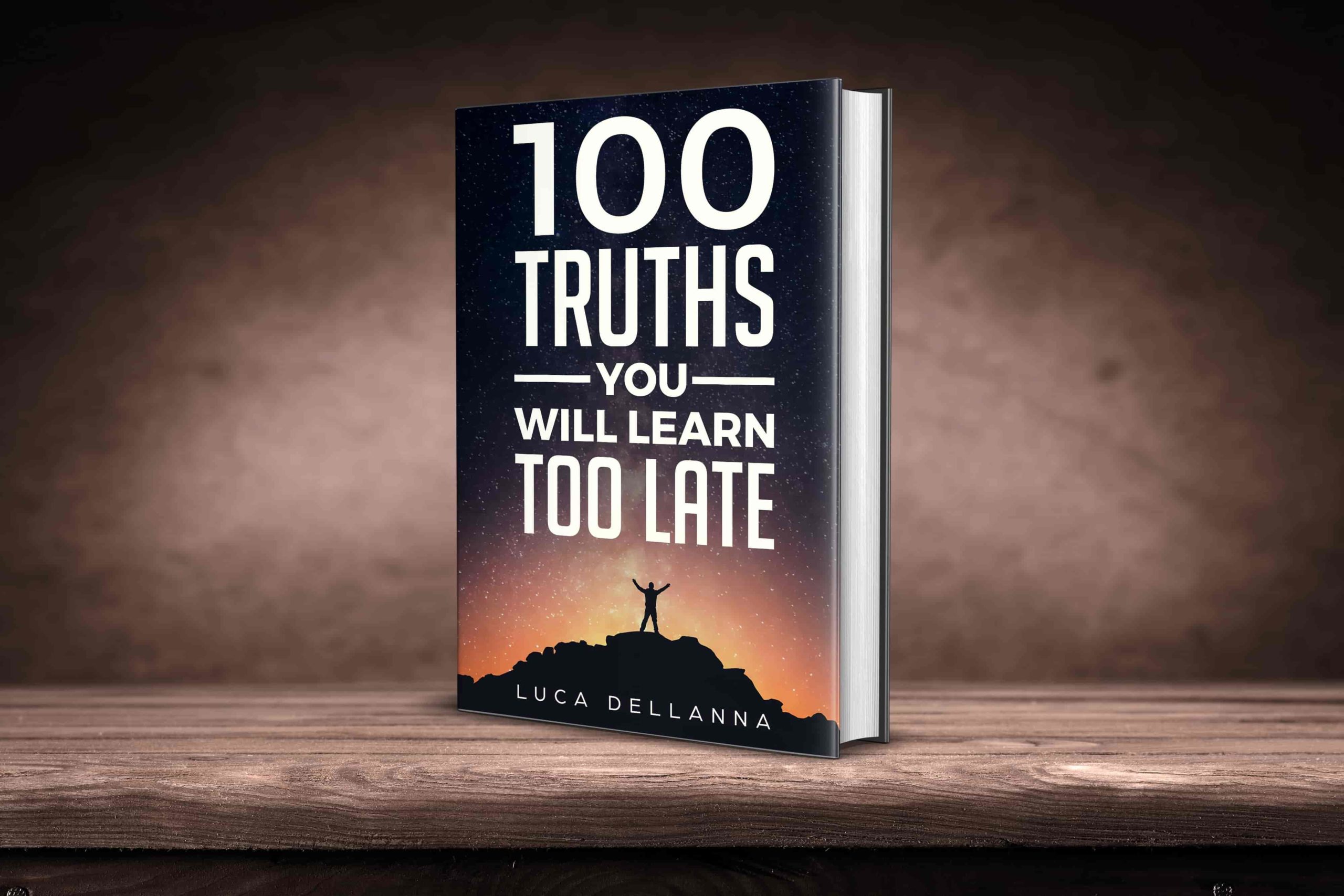There are many reasons for which problems appear. However, there is a single reason for which they grow: if we ignore them.
(This is an excerpt from my book “The Control Heuristic”)
Three ways in which people behave irrationally
- Decision paralysis: when people faced with a decision do nothing even though it’s strictly worse than any other choice.
- Procrastination: when people like the outcome of an action but not what it would take to achieve it, and therefore end up doing nothing.
- Toxic relationships: when people stay in a relationship with someone even though the relationship is bad for them.
This article examines them one by one, revealing its causes and purposes.
DECISION PARALYSIS
Decision paralysis is what procrastination looks like when social considerations make it inadmissible. We cannot explicitly procrastinate the choice but do not feel like taking it. The result is what looks like decision paralysis.
Decision paralysis is not, as commonly believed, the result of not knowing what to choose, but the result of not liking the idea of making a choice.
In fact, even when we say that we do not know what to choose, there is always one option that we favor, at least slightly. A simple test can demonstrate it. The next time you face decision paralysis, assign one choice to head, the other to tails, flip a coin, and cover its result. In the instant between the moment the coin lands on your hand and the moment you peek at the result, you will feel yourself wishing for one of the two outcomes. (If you try this experiment, make sure that you apply it to a real choice you have to make in your life; not to a thought experiment conjured while reading this book.)
This simple test demonstrates that the lack of a clear “best option” is a made-up explanation for the unwillingness to make a decision.
There are two possible reasons for which a choice between two outcomes results in decision paralysis:
- We are uncomfortable with both outcomes, and we hope that by delaying the choice, we also delay its consequences.
- We are okay with either outcome, but not with making a decision. For example, some people face decision paralysis at the restaurant. They are okay with both the steak and the fish. However, they are not okay with deciding whether to get one or the other. Perhaps, they feel that their friends would judge them for the choice.
Hence decision paralysis is the result of either a too-low Expected Emotional Outcome (EEO) associated with both choices, or of a too-low EEO associated with making a decision (regardless of the outcome of the decision).
After all, making a decision is an action of itself. As such, it is subject to the same rules of proper actions: we execute them if and only if we have a high enough EEO with the action itself, regardless of our emotional associations with its outcomes.
Principle
Decision paralysis is the result of either a too-low EEO associated with both choices, or of a too-low EEO associated with making a decision (regardless of the outcome of the decision).
PROCRASTINATION
Due to the gating rules [the rules governing the functioning of the basal ganglia, an organ in our brain, object of a previous chapter], whenever the Expected Emotional Outcome (EEO) associated with an action is too low, we cannot take it. The next step for our cortex, faced with an impossibility to get the action executed now, is to schedule it for later.
Procrastination is not a decision. Rather, it is how we keep plausibly open the possibility to perform an action that we cannot perform now because its EEO is too low (and the gating rules do not allow us to take actions with negative EEO).
Not all cases of postponing an action are due to this process. Sometimes, the cause is an unexpected event or change in circumstances. However, most cases of chronic procrastination – postponing the same action over and over – are due to the process described above.
I want to highlight the direction of causality. Most times, we do not procrastinate because we have something else to do. Instead, we find ourselves something else to do because we procrastinate.
Principle
Whenever an action makes sense but its EEO is too low for us to act, we procrastinate.
TOXIC RELATIONSHIPS
Some people stay in relationships which are bad for them. These people know that their relationship is far from perfect. However, they also believe they would not be able to survive without it.
Their behavior is indistinguishable from addicts: they need the next dose, they cannot fathom not having the next dose, and they would do anything to get the next dose. The behavior is engraved so deeply in their brain that no analytical consideration can sway them.1
When people in toxic relationships do something good for their partner, they get their “emotional fix”. This engraves the act of doing something good for their partner as positive. The result is the false inference that they need to do something good for their partner, and hence they need to keep the relationship alive, regardless of whether they get hurt by the relationship too – just like a drug addict wants the next dose, even if it knows that it is bad for him.
The direction of causality in the paragraph above is particularly important. The addiction to the action of doing something good for the partner makes them feel like they need to keep the relationship alive. This is shown by the fact that after some toxic relationship end, one partner still wants to do something good for the other.
End of the excerpt
This is an excerpt from my book “The Control Heuristic: Explaining Irrational Behavior and Behavioral Change”.

